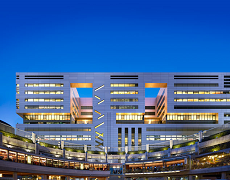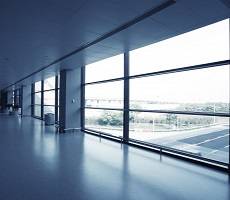May 20, 2014
Trust in ethical behaviour is linked to the size of the business, claims report
 The larger the firm the less likely it is to trust its employees to behave ethically according to a new report from the Association of Accounting Technicians. The research also found that UK’s most ethical businesses are small architectural practices. According to the research, conducted by Opinion Matters on behalf of AAT, only 37 per cent of SMEs trust their staff to do the right thing compared to 66 per cent of microbusinesses. The report also found that firms in the architectural sector have more faith in the ethical decision making of their employees and are more concerned about the ethical behaviour of suppliers than in any other industry. Interestingly, the report highlights the fact that, as the number of employees increases, businesses are more likely to dedicate a member of staff dedicated to fostering ethical behaviour and have a formal code of conduct.
The larger the firm the less likely it is to trust its employees to behave ethically according to a new report from the Association of Accounting Technicians. The research also found that UK’s most ethical businesses are small architectural practices. According to the research, conducted by Opinion Matters on behalf of AAT, only 37 per cent of SMEs trust their staff to do the right thing compared to 66 per cent of microbusinesses. The report also found that firms in the architectural sector have more faith in the ethical decision making of their employees and are more concerned about the ethical behaviour of suppliers than in any other industry. Interestingly, the report highlights the fact that, as the number of employees increases, businesses are more likely to dedicate a member of staff dedicated to fostering ethical behaviour and have a formal code of conduct.























March 14, 2014
Might a lack of joined-up thinking undermine UK high-tech ambitions?
by Mark Eltringham • Comment, News, Property, Technology
Old Street: the UK’s tech epicentre
Over the past week both Prime Minister David Cameron and London Mayor Boris Johnson have offered up visions of economic success founded on new technology. Yet, as the CBI points out in a new report pinpointing the dearth of talent needed to make such dreams a reality, politicians often appear to ignore the realities of a situation. In its new report, Engineering our Future, the CBI calls for significant action to make a career in the key disciplines of science, technology, engineering and maths more attractive and easier to pursue. The report points out that these are the skills needed to underpin the Government’s stated focus on the tech, environmental, engineering and manufacturing industries that will shape the country’s future and is calling for a cut in tuition fees, new courses and inter-disciplinary qualifications to allow those skills to flourish.
(more…)